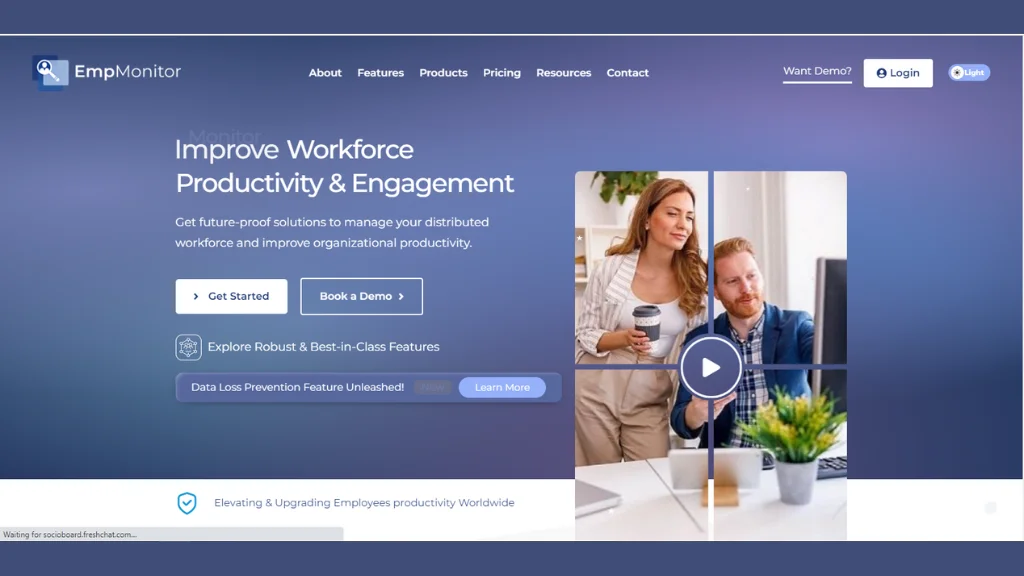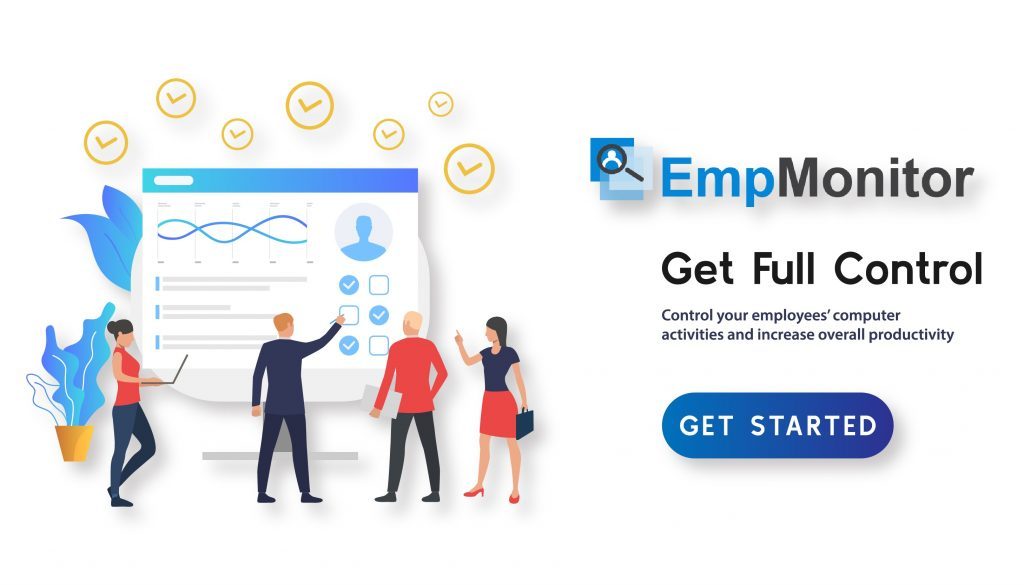Is your team feeling restricted by the limitations of a traditional office environment? Are you looking for a workplace that promotes both freedom and productivity? A flexible work environment eliminates location and time constraints, promoting employee efficiency and satisfaction.
A flexible work arrangement embraces location and schedule flexibility, empowering individuals to adapt work settings to their needs. It goes beyond remote work, offering the freedom to work in various locations. This approach prioritizes productivity over a fixed workspace and hours. Its rising popularity signifies a shift towards more autonomy, elevating work quality and life satisfaction.
In this blog, we’ll explore various aspects of flexible work culture, starting with an overview of different types of arrangements. We’ll then discuss strategies for creating a flexible work environment, emphasizing its importance and practical implementation. Additionally, we’ll examine the benefits of flexible work practices for employees and organizations. Throughout, we’ll touch upon the role of employee monitoring systems in maintaining productivity in flexible work setups, offering insights to optimize performance and workflow management.
Hit ‘Play’ Button & Tune Into The Blog!
Types Of Flexible Work Options
A flexible work environment offers various arrangements tailored to individual and organizational needs and preferences. This flexibility is not a one-size-fits-all concept; instead, it’s a collection of adaptable work models. Let us explore a few common types of flexible work styles:
Remote Work: It is also termed as full-time telework or telecommuting, encompasses a flexible working policy enabling individuals to work from home full-time rather than commuting to an office part-time or full-time. This approach grants people the flexibility to choose where they work.
Part-Time: Part-time jobs involve working fewer hours per day, week, or month than full-time positions. This configuration allows scheduling, location, and workload flexibility, allowing for a healthy balance of work, personal commitments, and other interests.
Compressed Workweeks: Employees complete their weekly hours in fewer days, providing additional consecutive days off and promoting work-life balance.
Job Sharing: Two or more employees split the responsibilities of a full-time employee role, allowing for a shared workload while maintaining a full-time position.
Flextime: Employees have control over their start and end times within predefined core hours, providing flexibility in their daily schedules.
Hybrid Work: A hybrid work schedule combines remote and in-office work to give employees flexibility and face-to-face collaboration. It also gives them the freedom to choose where they work. In the domain of hybrid work, various models offer different levels of flexibility, including:
- Hybrid at-will: Employees have the freedom to select the day(s) they prefer to work from the office.
- Hybrid split-week: Companies designate specific days for on-site and remote work based on teams or functions.
- Hybrid manager scheduling: Managers hold the discretion to determine the day(s) their team members are present in the office.
Each flexible work environment option offers distinct advantages and caters to different needs, contributing to a more adaptable and accommodating work environment. Embracing flexible work options requires the right balance of productivity, security, and performance tracking. EmpMonitor supports organizations in seamlessly managing diverse work models with ease.
How To Create A Flexible Work Environment And Make It Work?
Creating and maintaining a flexible work environment requires a multifaceted approach that includes implementation and continuous nurturing.
Here are the steps to create and effectively manage a flexible workplace culture:
Establish Clear Work Policies and Guidelines
Develop and communicate comprehensive policies and guidelines that outline the parameters, expectations, and security protocols for remote or flexible job arrangements. Cover various aspects, including working hours, communication protocols, data access, confidentiality, and performance evaluation methods. These policies ensure consistency, clarity, and security in remote work operations.
Invest in Technology and Infrastructure
Equip your organization with the necessary technology and infrastructure for seamless support for remote work. Robust IT systems, collaboration tools, secure networks, and potentially employee monitoring software are essential for efficient remote collaboration.
Cultivate a Supportive Culture
Create a culture that emphasizes flexibility, work-life balance, and open communication. Leadership support and active encouragement of flexible work initiatives are critical for creating an environment in which employees feel supported and empowered.
Implement Regular Check-ins and Feedback Loops
Establish regular check-ins to maintain alignment, assess progress, and provide constructive feedback. Maintaining consistent communication bridges physical distances and ensures alignment with organizational goals for everyone.
Evaluate, Adapt, and Evolve
Continuously assess the efficacy of your flexible work policies and make adjustments as needed. Employee feedback and changing work dynamics should inform these adaptations, fostering a culture of responsiveness and continuous improvement.
Provide Support and Resources
Give employees the support and resources they need to thrive in a flexible work environment. It includes access to technical support, mental health resources, ergonomic support for remote setups, and the implementation of workforce management software, like EmpMonitor, to help manage and optimize productivity while respecting individual privacy and ensuring a secure work environment.
By consolidating these points, organizations can create a solid foundation for a flexible work environment while ensuring clarity, security, and adaptability in remote work setups.
What Are The Benefits Of A Flexible Work Environment?
Implementation of a flexible work environment offers an array of advantages that extend beyond the traditional confines of work structures. Flexible work benefits employees and employers, shaping a dynamic and productive work culture.
For Employees:
Enhanced Work-Life Balance: A flexible work arrangement promotes a healthier work-life balance for employees. The ability to tailor schedules to accommodate personal commitments reduces stress and enhances overall well-being.
Increased Job Satisfaction and Morale: Flexibility fosters higher job satisfaction among employees. When employees feel trusted and valued, it boosts morale, positively influencing their performance and commitment to the organization.
Reduced Commuting Costs and Stress: Employees working remotely or with flexible hours save time, money, and commute-related stress. It fosters a more relaxed and focused work environment.
The holistic advantages of a flexible work environment significantly impact the dynamics within organizations, fostering a culture of productivity, engagement, and well-being for both employers and employees.
For Employers:
Enhanced Productivity and Engagement: A flexible schedule often leads to increased productivity and higher engagement of employees. Empowering them to manage their work environments and schedules fosters a sense of ownership and responsibility.
Enhanced Retention: Providing flexibility at work enhances job satisfaction, lowers turnover rates, and fosters employee loyalty and commitment.
Global Talent Acquisition: Flexible work setups empower companies to access talent pools from across the globe, drawing in proficient professionals from diverse backgrounds. It fosters innovation by embracing a wide range of perspectives and expertise.
Cost Savings: Implementing flexible work can result in cost savings for employers. Reduced office space, utilities, and overhead costs contribute significantly to overall savings.
EmpMonitor: To Face Challenges In A Flexible Work Environment
Switching to a flexible work environment presents various challenges, including maintaining productivity, ensuring data security, and monitoring employee performance. EmpMonitor emerges as a crucial tool in overcoming these hurdles and fostering a successful, flexible work culture.
EmpMonitor is a sophisticated employee monitoring tool designed to address challenges in maintaining productivity, data security, and performance evaluation in flexible work environments, offering real-time monitoring and comprehensive security measures.
Below are the key features of EmpMonitor that contribute to effective remote workforce management:
Enhance Productivity Monitoring
One challenge of remote work is ensuring consistent productivity. EmpMonitor offers real-time monitoring features, allowing employers to track employees’ active hours, tasks completed, and time spent on different applications or projects. This insight helps in identifying productivity trends and optimizing workflow strategies.
Maintain Data Security
Remote work often raises concerns about data security. EmpMonitor provides comprehensive data security measures, including monitoring file access, identifying unusual activities, and preventing data breaches. It helps to ensure confidentiality and integrity of sensitive information, even in remote work setups.
Performance Evaluation and Insights
Evaluating employee performance remotely can be challenging. EmpMonitor generates detailed reports on employee activity, offering insights into work patterns, efficiency, and areas for improvement. These insights facilitate fair and data-driven performance evaluations.
Track Application Usage
EmpMonitor tracks application usage, providing detailed insights into the applications and tools employees utilize throughout their workday. This data aids in understanding workflow efficiencies, identifying preferred tools, and optimizing software usage for enhanced productivity.
Screen Activity and Keystroke Logging
EmpMonitor captures screen activities and logs keystrokes, offering a detailed overview of employee work patterns. It aids in verifying task completion, understanding work behaviors, and contributing to performance evaluations and training needs. This dual functionality provides nuanced insights into productivity, facilitating effective management decisions and training strategies.
URL and Website Tracking
It tracks website visits and URL usage, offering visibility into employees’ online activities. This feature assists in understanding time allocation, identifying potential distractions, and enhancing time management strategies.
EmpMonitor equips organizations with the right tools to maintain productivity, ensure security, and evaluate performance seamlessly in a flexible work environment. Optimize your workforce management with advanced monitoring capabilities today.
Read More
Remote Team Management: Tips For Leading A Distributed Workforce
The Successful Workforce Management Tool To Support Flexible Work Hours
06 Examples To Improve Employee Flexible Work Arrangements
Final Thoughts
Transitioning to a flexible work environment offers both opportunities and challenges. While remote workforce management software like EmpMonitor address concerns like productivity, data security, and team collaboration, hurdles in this transformation are undeniable.
Achieving success goes beyond just relying on tools; it involves cultivating a supportive culture. Embracing flexibility requires nurturing open communication, trust, and empowerment within the organization.
The advantages of flexibility extend to improved work-life balance, heightened productivity, and access to a broader talent pool. It’s not merely an extra benefit; it forms the core of a contemporary work culture. Let’s harness these strengths, tackle obstacles, and forge a future where work has limitless possibilities.















